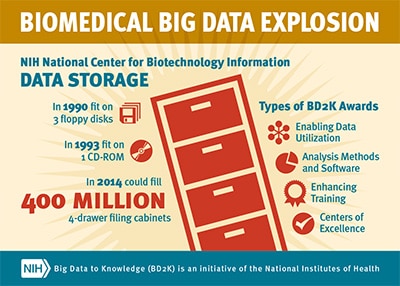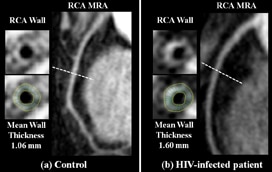Research Updates
Building beta cells from human stem cells: Many years of research into the biology of insulin-producing β (beta) cells has culminated in the discovery of a method to produce β cells from human stem cells. Islet transplantation—during which pancreatic islets, including β cells, are transplanted into people whose own β cells are not functioning properly—is a promising experimental treatment for type 1 diabetes.
Changes in body mass, age, race/ethnicity associated with rising diabetes prevalence in U.S.: Though diabetes prevalence among both men and women rose between 1976 and 2010, NIH researchers and collaborators have found that the reasons for those increases may have been somewhat different in each gender. The scientists found that the aging of the U.S. population, changes in the country’s makeup of race and ethnicity and changes in body mass index (BMI) explained the increase in women’s diabetes prevalence, but did not sufficiently account for all of the increase in men’s diabetes prevalence.
Comparing surgical and non-surgical treatments for type 2 diabetes in adults who have moderate or low levels of obesity: Two small clinical trials found that after one year of treatment bariatric surgery may be more effective than non-surgical approaches for treating type 2 diabetes in adults who have moderate or low levels of obesity. Researchers also identified factors to be considered in planning further research.
Detection of abnormal glucose tolerance in Africans is improved by combining A1C with fasting glucose: The Africans in America Study: Abnormal glucose tolerance is rising in sub-Saharan Africa. Hemoglobin A1c by itself and in combination with fasting plasma glucose is used to diagnose abnormal glucose tolerance. The diagnostic ability of A1C in Africans with heterozygous variant hemoglobin, such as sickle cell trait or hemoglobin C trait, has not been rigorously evaluated.
Evaluating treatments for childhood malnutrition based on changes in gut bacteria: A team of U.S. and Bangladeshi scientists discovered that children who are malnourished do not harbor gut bacteria typical for their age, even several months after receiving a nutritional intervention. The persistence of this “immature” collection of gut bacteria may be a reason why the children do not grow well even after receiving nutrient-dense food.
Frequently used endoscopic procedure fails to reduce abdominal pain: In a clinical trial to examine a procedure used in clinical practice with the intent of relieving pain after gallbladder removal, researchers have found that this procedure, which carries considerable risk, may not be effective.
Kidney cell response to urinary tract infection helps halt bacterial growth: Researchers have identified a new bodily defense mechanism deployed in the fight against urinary tract infections (UTIs). UTIs are very common and affect more women than men. The leading cause of UTIs is exposure to uropathogenic E. coli bacteria.
Molecular basis of sickle-cell drug identified: NIDDK researchers have identified a molecular basis for a key beneficial effect of the drug hydroxyurea in patients with sickle-cell disease (SCD). Hydroxyurea increases fetal hemoglobin concentrations in the red blood cells of patients with SCD, thus diluting the concentration of sickled red cells and so decreasing the tendency of red cells to block blood flow to tissues. The drug is the only one approved by the FDA for treating SCD, and in many patients it reduces common complications such as severe pain and organ damage.
Molecules limit chronic nerve pain in rodents: Researchers from NIH, St. Louis University School of Medicine, and other institutions have found that turning on a receptor in the brain and spinal cord counteracts chronic nerve pain in male and female rodents. Activating the A3 receptor—either by its native chemical stimulator, the small molecule adenosine, or by powerful synthetic drugs invented at the NIH—prevents or reverses pain that develops from nerve damage.
New drug for common liver disease improves liver health: An experimental drug aimed at treating a common liver disease showed promising results and potential problems in a multicenter clinical trial funded by the NIH. The FLINT study found that people with nonalcoholic steatohepatitis (NASH) who took obeticholic acid (OCA) had improved liver health during that period, including decreased inflammation and fat in the liver and decreased body weight versus people receiving a placebo. OCA was also associated with increases in itching and total cholesterol.

NIH invests almost $32 million to increase utility of biomedical research data: Wide-ranging NIH grants will develop new strategies to analyze and leverage the explosion of increasingly complex biomedical data sets, often referred to as Big Data. These NIH multi-institute awards constitute an initial investment of nearly $32 million in fiscal year 2014 by NIH’s Big Data to Knowledge (BD2K) initiative, which is projected to have a total investment of nearly $656 million through 2020.
Non-invasive imaging shows earlier sign of cardiovascular disease in vessels of HIV patients: A team of researchers at the NIH Clinical Center found that the coronary (heart) vessel walls in a group of 35 HIV-positive young adults were, on average, thicker than in a group of 11 young adults without the virus. They also found that duration of HIV therapy, smoking cigarettes and high fat levels in the blood were each linked to thicker vessels in the first group.

Nuclear receptor website updated: The NIDDK-funded Nuclear Receptor Signaling Atlas (NURSA) website has been redesigned and updated to better serve the scientific community. NURSA has been developed over the past decade into a comprehensive source of information about nuclear receptors (NRs) and their co-regulators, ligands and downstream targets. The new website has a user-friendly layout, data from resources such as ClinicalTrials.gov and DrugBank, the ability to view data in popular browsers, among many other resources. The mission of NURSA is to accrue, develop and communicate information to advance our understanding of the roles of NRs in human diseases and conditions.
Recombination initiation maps of individual human genomes: The dramatic events of meiotic recombination culminate in the exchange of genetic information between parental chromosomes and ensure the production of genetically distinct gametes. Recombination is initiated by the formation of programmed DNA double-strand breaks, which mostly occur at discrete hotspots defined by the DNA binding specificity of the PRDM9 protein.
Removing a protein prevents obesity, extends lifespan in mice: Aging is associated with more body fat—also known as white fat—and less efficient use of energy. Exactly what influences these changes has been poorly understood. A team at NIDDK’s intramural Genetics of Development and Disease Branch, led by Dr. Elisabetta Mueller, has found that deleting a protein named Foxa3 protects mice from developing obesity and type 2 diabetes as they age.
Two drugs are no more effective than one to treat common kidney disease: Using two drugs was no more effective than a single drug in slowing disease progression in people with autosomal dominant polycystic kidney disease (ADPKD), according to two studies funded by the NIH. One of the studies also showed that rigorous blood pressure treatment slowed growth of kidney cysts, a marker of ADPKD, but had little effect on kidney function compared to standard blood pressure treatment.

